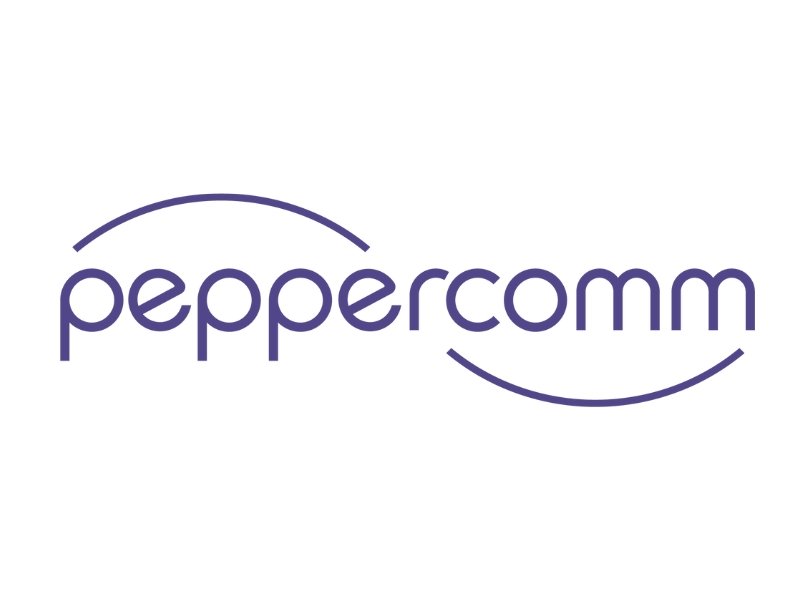Peppercomm 26 Feb 2024 // 12:05PM GMT

The year 2023 will be remembered for more brands landing in deeper and hotter water than ever before. Seemingly every week, one or multiple companies were saying or doing things that angered their stakeholders. The harsh reality is that 2024 will be even more challenging for organizations to navigate. With the U.S. general election approaching in a country more polarized than ever and geopolitical situations heating up in the Middle East, Eastern Europe and the Taiwan Strait, reputational risks loom large. Every company needs a playbook for managing social and political crises impacting their people, brands and business.
Peppercomm’s Team Meridian, our specialized group of crisis communications strategists, offers these five steps organizations should begin to take today to empower themselves to win tomorrow.
Prepare Now – Jacqueline Kolek, Chief Innovation Officer
If there was one thing that 2023 taught us, it was to prepare for the unexpected. We witnessed violence at Target stores in response to Pride merchandise, an actors’ strike, a missing Titanic sub, the rise of antisemitism on college campuses and so much more. 2023 was a year filled with unforeseen events that captivated the nation. And with these events, many communications professionals found themselves with crisis plans that were either outdated, not applicable, or simply non-existent.
Far too often, organizations create crisis response protocols that are specific to tangible threats they have identified, such as cyberattacks or severe weather. However, when faced with a crisis for which they have not planned — or those intangible crises such as social or political issues — these organizations lacked a clear and efficient way to gather information, make decisions and react effectively. While it's a good idea to create templates and plan for the tangible risks that are inherit in your business, today’s crisis protocol must take into account the unexpected and provide an objective, repeatable framework that enables your organization to respond to any crisis scenario and address the concerns of your stakeholders accurately, swiftly and effectively.
Align Words With Actions – Matt Purdue (he/him/his), Senior Vice President, Content Strategy
One of the strongest examples of what can go wrong when a brand fails to align its messages with its actions struck Bud Light in 2023. The iconic brew, long positioned as a traditional all-American beverage via NFL sponsorships and the like, partnered with trans influencer Dylan Mulvaney. Backlash from conservatives was swift and vicious. So how did Bud Light respond? By deflecting — claiming an outside agency sent one can of beer to Mulvaney without approval. Conservatives didn’t care, and literally blasted the product. But what’s really interesting is that by disavowing Mulvaney, Bud Light also managed to anger progressives. After all, the company that claims “DEI must be embedded into how we think, behave and operate” was acting like a hypocrite. As a result, both conservatives and liberals stopped drinking Bud Light and sales crashed. This is a stark reminder that every brand must ensure that any stand it takes also aligns with its real-world actions. Stakeholders today are on high alert for companies that do not consistently do what they say and say what they do. Your organization must have a framework for continually auditing your social/political messaging against your operations to immediately spot contradictions and mismatches. Otherwise, you run the risk of suffering a self-inflicted wound just like Bud Light.
Respond, Don’t React – Paul Merchan, Senior Vice President
One of the biggest PR crises of 2023 involved the heads of top U.S. universities – Harvard, Penn and MIT – responding to questioning on Capitol Hill and failing to take an unequivocal stand against the antisemitism on their campuses. Penn President Liz Magill lost her job over how she responded to Congressional scrutiny. With polarizing global issues like the wars in Gaza and Ukraine continuing into 2024 — and the demand for corporate responses also rising — brands need to be prepared with meaningful, thoughtful statements and actions. Leaders need to lean on a team of experts — including legal, compliance, PR/communications and operations — to ensure they are saying and doing the right things that are aligned with stakeholder needs and the organization’s messages and values. As shown by the crises involving the university presidents, it’s clear that a PR snafu demands an immediate, clear and transparent apology — followed quickly by actions that mitigate your PR blunder and authentically demonstrate that you care about the offended group and are willing to work with them. This could mean sitting down with the group to hear concerns, organizing volunteerism to support this community or instituting reforms to educate leadership on the key worries of your stakeholders.
Prepare & Support Employees – Ann Barlow, Chief Engagement Officer
Like it or not, your employees are probably talking politics while on the job, according to a recent Glassdoor survey. And if your workforce skews young, they’re even more likely to talk about everything from the presidential primaries to shipping dangers on the Red Sea. You don’t want to drive the discussion underground by prohibiting political discourse, but do put some rules in place about civility and prioritizing work (the exception on the latter is following a tragic event like a mass shooting). As one of our clients will tell you from painful recent experience, this is also the time to remind employees that while their social handles are their own, hate speech of any kind will catch up with them — and the online fallout you experience as an employer may well result in the employee’s termination.
Combat Misinformation – Marissa Dunn, Senior Media Strategist
There are two key strategies when it comes to tackling misinformation – prevention and mitigation. Our friends at Alethea, a technology company dedicated to combating disinformation, warning in a recent blog, “we anticipate a substantial increase in bad actors using generative AI technologies to conduct disinformation campaigns.”
In order to ensure your brand does not become the next victim, ensure you are proactively monitoring all forms of your brand, including potential misspellings across media and social platforms. Take early warnings seriously, credible or not. From false claims about your CEO to conspiracy theories about your products, gen AI now has the ability to power mis- and disinformation and make it appear more genuine, fooling even the savviest individuals and organizations into believing what isn’t real. By actively monitoring, you can stay ahead of threats and be more prepared to respond, if and when they gain traction.
The second key component of mitigating mis- and disinformation is to establish your brand and your leadership as a source of credible, factual information. This can include creating a list of third-party, independent resources, bringing in outside speakers or aligning with advocacy groups that can offer insight and guidance during turbulent times. Encourage those around you to seek out authoritative, verified sources of information, especially ones that have been through editorial review.
To learn more about how Peppercomm’s Team Meridian can support the development of your organization’s playbook for societal and political crises, please visit Peppercomm.com.
Peppercomm’s Team Meridian, our specialized group of crisis communications strategists, offers these five steps organizations should begin to take today to empower themselves to win tomorrow.
Prepare Now – Jacqueline Kolek, Chief Innovation Officer
If there was one thing that 2023 taught us, it was to prepare for the unexpected. We witnessed violence at Target stores in response to Pride merchandise, an actors’ strike, a missing Titanic sub, the rise of antisemitism on college campuses and so much more. 2023 was a year filled with unforeseen events that captivated the nation. And with these events, many communications professionals found themselves with crisis plans that were either outdated, not applicable, or simply non-existent.
Far too often, organizations create crisis response protocols that are specific to tangible threats they have identified, such as cyberattacks or severe weather. However, when faced with a crisis for which they have not planned — or those intangible crises such as social or political issues — these organizations lacked a clear and efficient way to gather information, make decisions and react effectively. While it's a good idea to create templates and plan for the tangible risks that are inherit in your business, today’s crisis protocol must take into account the unexpected and provide an objective, repeatable framework that enables your organization to respond to any crisis scenario and address the concerns of your stakeholders accurately, swiftly and effectively.
Align Words With Actions – Matt Purdue (he/him/his), Senior Vice President, Content Strategy
One of the strongest examples of what can go wrong when a brand fails to align its messages with its actions struck Bud Light in 2023. The iconic brew, long positioned as a traditional all-American beverage via NFL sponsorships and the like, partnered with trans influencer Dylan Mulvaney. Backlash from conservatives was swift and vicious. So how did Bud Light respond? By deflecting — claiming an outside agency sent one can of beer to Mulvaney without approval. Conservatives didn’t care, and literally blasted the product. But what’s really interesting is that by disavowing Mulvaney, Bud Light also managed to anger progressives. After all, the company that claims “DEI must be embedded into how we think, behave and operate” was acting like a hypocrite. As a result, both conservatives and liberals stopped drinking Bud Light and sales crashed. This is a stark reminder that every brand must ensure that any stand it takes also aligns with its real-world actions. Stakeholders today are on high alert for companies that do not consistently do what they say and say what they do. Your organization must have a framework for continually auditing your social/political messaging against your operations to immediately spot contradictions and mismatches. Otherwise, you run the risk of suffering a self-inflicted wound just like Bud Light.
Respond, Don’t React – Paul Merchan, Senior Vice President
One of the biggest PR crises of 2023 involved the heads of top U.S. universities – Harvard, Penn and MIT – responding to questioning on Capitol Hill and failing to take an unequivocal stand against the antisemitism on their campuses. Penn President Liz Magill lost her job over how she responded to Congressional scrutiny. With polarizing global issues like the wars in Gaza and Ukraine continuing into 2024 — and the demand for corporate responses also rising — brands need to be prepared with meaningful, thoughtful statements and actions. Leaders need to lean on a team of experts — including legal, compliance, PR/communications and operations — to ensure they are saying and doing the right things that are aligned with stakeholder needs and the organization’s messages and values. As shown by the crises involving the university presidents, it’s clear that a PR snafu demands an immediate, clear and transparent apology — followed quickly by actions that mitigate your PR blunder and authentically demonstrate that you care about the offended group and are willing to work with them. This could mean sitting down with the group to hear concerns, organizing volunteerism to support this community or instituting reforms to educate leadership on the key worries of your stakeholders.
Prepare & Support Employees – Ann Barlow, Chief Engagement Officer
Like it or not, your employees are probably talking politics while on the job, according to a recent Glassdoor survey. And if your workforce skews young, they’re even more likely to talk about everything from the presidential primaries to shipping dangers on the Red Sea. You don’t want to drive the discussion underground by prohibiting political discourse, but do put some rules in place about civility and prioritizing work (the exception on the latter is following a tragic event like a mass shooting). As one of our clients will tell you from painful recent experience, this is also the time to remind employees that while their social handles are their own, hate speech of any kind will catch up with them — and the online fallout you experience as an employer may well result in the employee’s termination.
Combat Misinformation – Marissa Dunn, Senior Media Strategist
There are two key strategies when it comes to tackling misinformation – prevention and mitigation. Our friends at Alethea, a technology company dedicated to combating disinformation, warning in a recent blog, “we anticipate a substantial increase in bad actors using generative AI technologies to conduct disinformation campaigns.”
In order to ensure your brand does not become the next victim, ensure you are proactively monitoring all forms of your brand, including potential misspellings across media and social platforms. Take early warnings seriously, credible or not. From false claims about your CEO to conspiracy theories about your products, gen AI now has the ability to power mis- and disinformation and make it appear more genuine, fooling even the savviest individuals and organizations into believing what isn’t real. By actively monitoring, you can stay ahead of threats and be more prepared to respond, if and when they gain traction.
The second key component of mitigating mis- and disinformation is to establish your brand and your leadership as a source of credible, factual information. This can include creating a list of third-party, independent resources, bringing in outside speakers or aligning with advocacy groups that can offer insight and guidance during turbulent times. Encourage those around you to seek out authoritative, verified sources of information, especially ones that have been through editorial review.
To learn more about how Peppercomm’s Team Meridian can support the development of your organization’s playbook for societal and political crises, please visit Peppercomm.com.


































.jpg)













